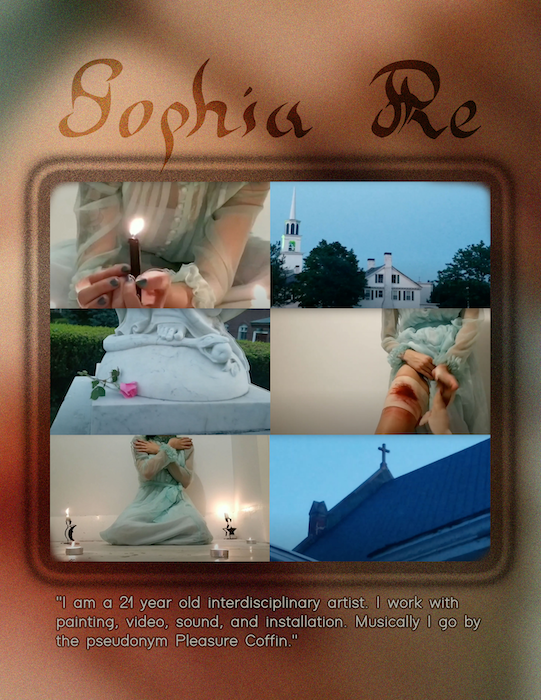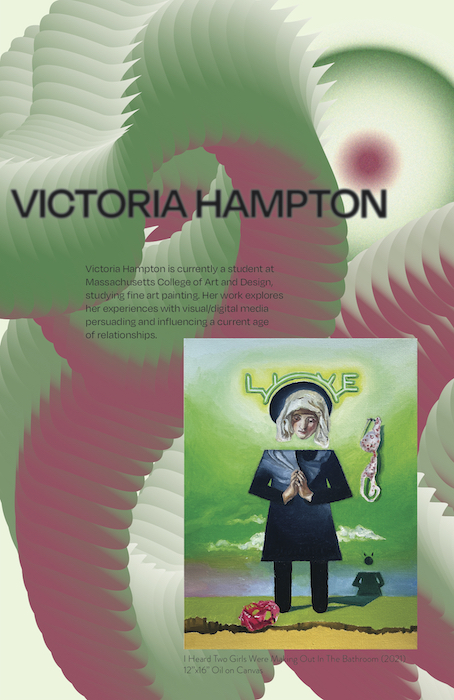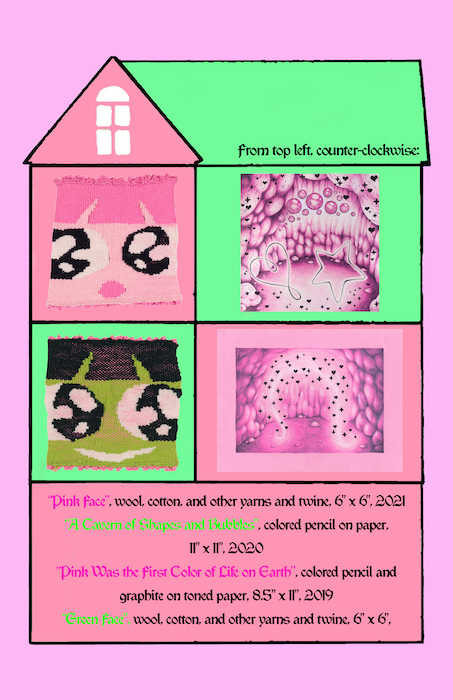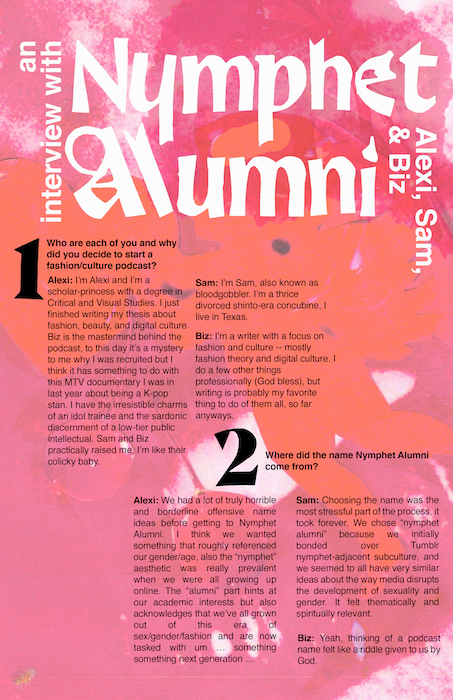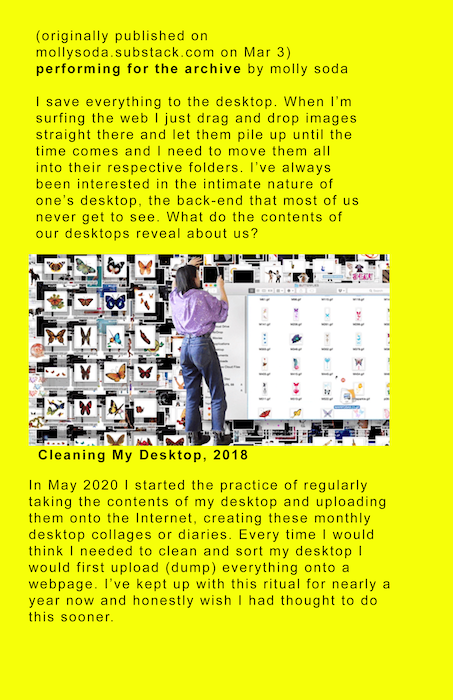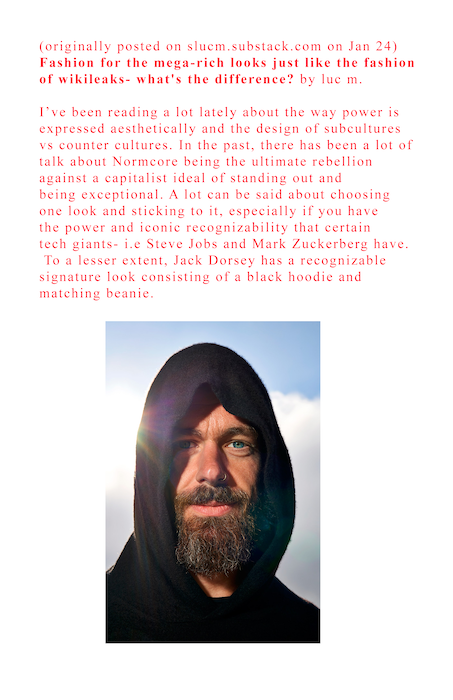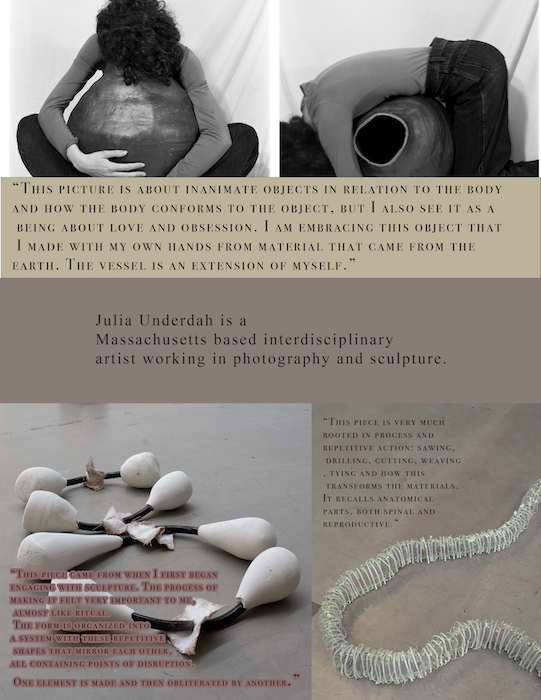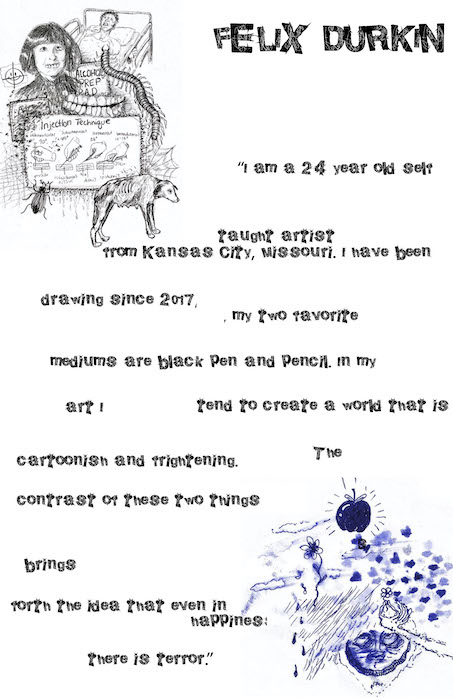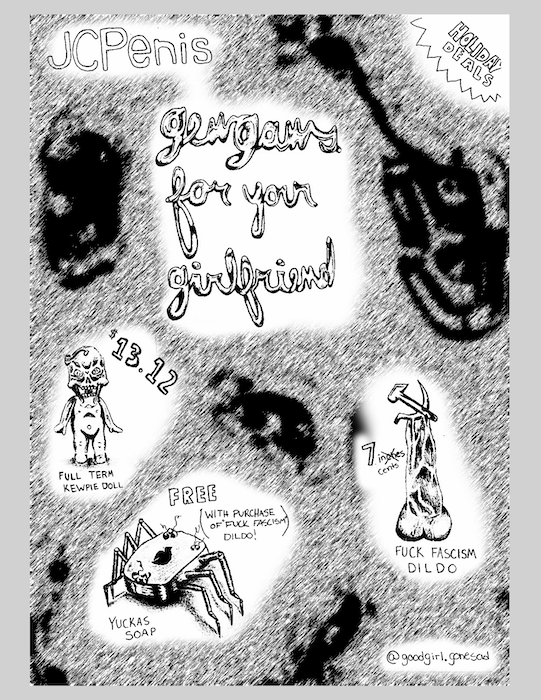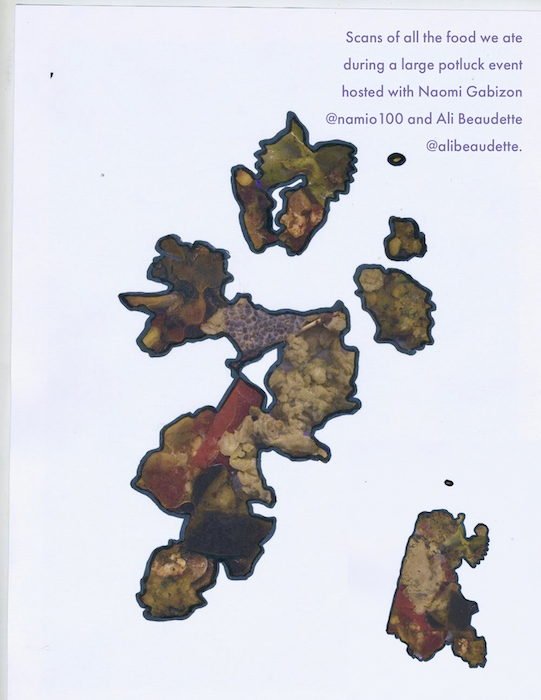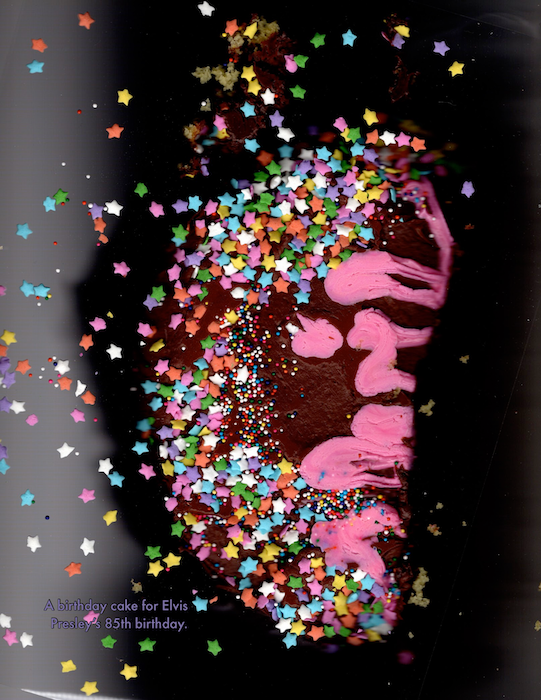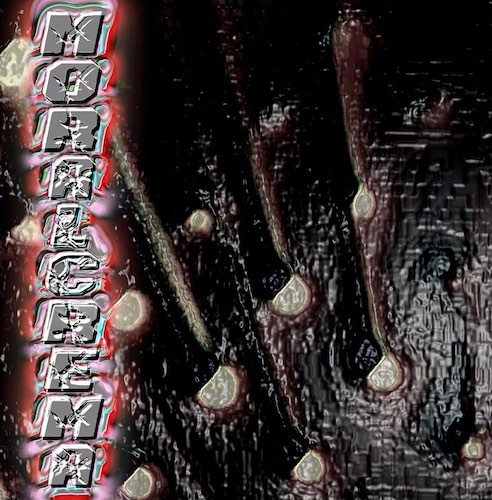
 Talking Class Boundaries, Decadence and Patty Hearst With Moral Crema
Talking Class Boundaries, Decadence and Patty Hearst With Moral Crema
In 2017, The New York Times announced maximalism was back. It had been “back” for a while before that on Tumblr and in burgeoning corners of Instagram where accounts like Decor Hardcore (re?)introduced us to the glory of shell beds, inflatable pink churches, and ice-sculpture toilets — design that was viscerally odd in a way that social media had begun to erase. But the binary of maximalism and minimalism has also felt reductive, a constant juxtaposition of Gucci tiger v. houseplants in a white room. Really, I think we were just looking for things we could touch and taste, more comfortable and complex textures.
This is where Moral Crema comes in, an art collective and quarterly magazine created by Luc Miglin that has what we’ve been missing: sensuous, grimy textures. With magazines, there used to be a feeling where you nearly wanted to lick the pages. They were meals and desserts you weren’t going to find elsewhere and, for that, you wanted to eat them. Moral Crema gives me that feeling.
Luc wants to create an “avant-garde lifestyle brand” in the vein of an art-world Goop, which they describe in the interview below as a lifestyle brand that feels like a “glamorous and weird art project.” This is a bit of a theme with Moral Crema, this examination of the aesthetics of optimization and wellness played around with and spit out in funny, uncanny valley ways. In the most recent Summer 2021 issue, satirical self-care tips to survive a 55-hour work week (leech therapy with Oprah!) live alongside artist Felix Durkin’s black-pen-and-pencil illustrations of a “cartoonish and frightening world” and images of a dinner party with food art collective Lucky You.
Below, Luc talks with Very Famous about traversing class boundaries, building a cult following, and going as Patty Hearst for the Met Gala.
Tell me the origin story of Moral Crema! What was it born from, and how did you decide on the name?
Moral Crema started my sophomore year of art school when I wanted to host a large-scale multimedia event unlike any show I’ve seen before. I came into a major that centers production and collaboration and was feeling ambitious as a way to work on my insecurity as an artist. I don’t remember what sparked the name, I wanted something that sounded both sensuous and decadent as well as having a philosophical tint. Thot Experiment was in the running.
How would you describe Moral Crema to someone who hasn’t heard of it?
This is something I have to do constantly and don’t know how to do it. I usually start with the quarterly magazine, and then go on to explain that I host music shows, gallery pop-ups, markets etc. It functions essentially like an artist collective where the members flow in and out through each project.
What was missing from the arts-and-culture worlds you’re part of that made you want to create this publication and collective?
It’s hard to put into words, but there was a certain feeling missing from academic/institutional and DIY circles hosting events and putting out publications. I think being able to bridge these worlds and create something that felt transcendent and all-encompassing was the hope with each of my projects.
There’s a lot of textured decadence to an issue — mashed cake and frosting, underwater swirls and fruit baskets, scenes that look like the inside of caves and mouths. It feels like putting on a satin blouse and going to someone’s apartment with a messy cake and lots of candles and hot strangers. What drives that sort of maximalist atmosphere with Moral Crema?
Part of it is personal taste, and another part is that desire of traversing class boundaries. I think a lot of ball culture in the DIY spirit entwined with elegance. As an artist and creative director I am interested in creating environments and being able to fully indulge an audience/viewers’ senses.
As a follow-up to the last question, it feels like there’s also a skepticism towards modern daily life accompanying that layered hedonism. In July’s issue, there’s a spread of self-care tips after your “55-hour work week” suggesting $5,000 Evian water baths with Serena Williams and laughing with Elon Musk. How do those lush landscapes like Gaby Schaad’s Xerox scans of food or, from your October issue, Mallory Casper Wagonburner Lovelace’s photo of a lollipop resting on a glass interact with commentaries on the sterile optimization of modern life?
That spread was made by an artist friend of mine, Anna Reidester, who also had some poetry in previous issues. It was originally a part of an entire satire magazine they did called Lean In Mag. I saw that project and really wanted to include it because it fit in so well with my personal idea of making Moral Crema an “avant-garde lifestyle brand.” As I said earlier, I am really interested in creating environments and putting artistic ideas into daily use. I am also obsessed with brands like Goop that feel like glamorous and weird art projects.
I know you do in-person events, too, like the experimental cabaret in February 2020 and, this summer, the yard sale and pop-up gallery. How do these events further the community you’re creating?
Events were my primary interest at first since I want to hone the craft of environment creation. As a “lifestyle” collective, I want to use live events to put into practice the ideas I publish in the magazine. I want to hopefully create a group of people with a certain cultural understanding, kind of like the cult following other underground publications gather. I hope that people can use the publication/brand as a form of artistic identity as a group.
What’s the ultimate vision for Moral Crema?
I want to gather a cult following, not for myself but for the ideas the publication and events are putting out. I want people to feel like they’re in on something, without it being cliquey and exclusive. Hopefully the quality will continue to improve over the years without any damage to the integrity.
So I’m ripping off this last question that I loved from your interview with the podcast Nymphet Alumni. What would you wear to this year’s American-themed Met Gala?
I would go for a Patty Hearst-inspired, debutante-turned-insurgent, militaristic look. Her perfect ‘70s blowout combined with a machine gun and a beret are perfectly American. The look tells an entire story that has it all — smashed wine bottles, brainwashing, armed conflict, and an heiress.
Pages From Moral Crema
Categorised in: Features
